You're using an outdated browser. Please upgrade to a modern browser for the best experience.

Submitted Successfully!
Thank you for your contribution! You can also upload a video entry or images related to this topic.
For video creation, please contact our Academic Video Service.
| Version | Summary | Created by | Modification | Content Size | Created at | Operation |
|---|---|---|---|---|---|---|
| 1 | Yuichi Oba | -- | 4142 | 2023-05-30 14:13:57 | | | |
| 2 | Catherine Yang | -1 word(s) | 4141 | 2023-05-31 02:58:35 | | | | |
| 3 | Catherine Yang | Meta information modification | 4141 | 2023-05-31 03:00:06 | | |
Video Upload Options
We provide professional Academic Video Service to translate complex research into visually appealing presentations. Would you like to try it?
Cite
If you have any further questions, please contact Encyclopedia Editorial Office.
Oba, Y.; Hosaka, K. The Luminous Fungi of Japan. Encyclopedia. Available online: https://encyclopedia.pub/entry/45011 (accessed on 29 December 2025).
Oba Y, Hosaka K. The Luminous Fungi of Japan. Encyclopedia. Available at: https://encyclopedia.pub/entry/45011. Accessed December 29, 2025.
Oba, Yuichi, Kentaro Hosaka. "The Luminous Fungi of Japan" Encyclopedia, https://encyclopedia.pub/entry/45011 (accessed December 29, 2025).
Oba, Y., & Hosaka, K. (2023, May 30). The Luminous Fungi of Japan. In Encyclopedia. https://encyclopedia.pub/entry/45011
Oba, Yuichi and Kentaro Hosaka. "The Luminous Fungi of Japan." Encyclopedia. Web. 30 May, 2023.
Copy Citation
Luminous fungi have long attracted public attention in Japan, from old folklore and fiction to current tourism, children’s toys, games, and picture books. 25 species of luminous fungi have been discovered in Japan, which correspond to approximately one-fourth of the globally recognized species. This species richness is arguably due to the abundant presence of mycophiles looking to find new mushroom species and a tradition of night-time activities, such as firefly watching, in Japan.
bioluminescence
fungi
mushroom
Japan
1. Introduction
The occurrence of dim-glowing mycelia on fallen twigs, which was first recognized as unknown ‘shining wood’, and luminous mushrooms on rotten trees has fascinated people around the world (Figure 1), and Japan is no exception. The special interest in bioluminescent fungi in Japan is probably related to the richness of fungal diversity, which has led to a love of mushrooms and mushroom consumption in this country. In addition, a tradition of night-time activities could also be a factor.

Figure 1. (A) Luminous mushroom stamps. (From left to right) Mycena chlorophos/West Samoa, 1985; Mycena manipularis/Việt Nam, 1996; Mycena lucentipes/USA, 2018. There are no luminous mushroom stamps in other countries, including Japan. (B) Foxfire at Ōji (Ōji Shōzoku Enoki Ōmisoka no Kitsune-bi) by Hiroshige Utagawa (recarved edition, original print in 1857). (C) Pokémon cards. English names (from left to right): Morelull (basic), Shinotic (stage 1), and Glimwood Tangle (stadium), produced by The Pokémon Company (Tokyo, Japan). (D) Capsule toys: “luminous mushroom magnet” series (2015-) of eight Japanese luminous mushroom species, produced by Ikimon Co. (Tokyo, Japan). The diameter of the model of Mycena chlorophos (center) is approximately 30 mm, which is close in size to the largest specimens found in the wild. (E) Picture books of luminous mushrooms. (From left to right) Nishino & Oba, 2013; Oba & Miyatake, 2015; Miyatake, 2023. All are Yuichi Oba’s personal collections.
The climate of mainland Japan (Hokkaido, Honshu, Shikoku, and Kyushu) ranges from subarctic in the northern part to temperate in the southern part; it is typically characterized by a cold winter and humid summer. The peripheral Izu Islands, Bonin Islands (Ogasawara Islands), and Ryukyu Archipelago (including Amami and Okinawa Islands) have subtropical oceanic climates with mild winters and hot humid summers. Because of wide-ranging climates with high humidity and species richness in woods and mountainous areas, Japan has a high biodiversity of fungi. Currently, approximately 13,000 described species of fungi have been reported from Japan, with possibly even more undescribed species [1]. Mycophagy has been popular in Japanese food culture, probably since Japan’s Jomon Period (–10th BCE) [2]. Various species of mushrooms have been cultivated and are always available on the market, such as Lentinula edodes (Shii-také, in Japanese), Flammulina filiformis (Enoki-také, formerly recognized as F. velutipes), Hypsizygus marmoreus (Buna-shimeji, also known as H. tessulatus), and Pholiota microspora (Nameko), which are indispensable for everyday Japanese cuisine [2][3]. Many amateur mycologists have been devoted to the understanding of Japanese fungal diversity, and several new mushroom species are found and described every year all across Japan by amateur and professional Japanese mycologists.
2. Taxonomy
2.1. Bioluminescent Species in Japan
In Japan, scientific surveys of fungi started around the 18th century when Japanese scholars were emancipated from Chinese herbalism Honzō-gaku and began genuine native studies on Japanese flora. For example, a Japanese herbalism scholar, Tomohiro Ichioka (1739–1808), compiled a monograph of local fungi, “Shin-you Kinpu,” in 1799 and mentioned (probably) Omphalotus japonicus as Kumahira with illustration and the remarks “luminescence at night and poisonous.” Another Japanese herbalism scholar, Konen Sakamoto (1800–1853), compiled a monograph of the Japanese fungi “Kinpu” in 1835 and described O. japonicus as “Tsukiyo-také” with illustration and the remarks “this mushroom is called Tsukiyo-také because of luminescence at night”. Though based on pre-Linnean classification, these are probably the earliest scientific references about the bioluminescent mushroom in Japan. However, other luminous species were not described until the 20th century. This is partially because of the climate diversity of Japan. Mainland Japan, where most Japanese people including scholars are located, is characterized by a subarctic to temperate climate, while many luminous mushroom species, especially of the Mycena group, are distributed in tropical and subtropical regions. In other words, O. japonicus is the only bioluminescent mushroom species commonly (frequently) observed in Japan.
Indeed, O. japonicus is the first luminous mushroom species described scientifically under the Linnean system, which was formulated in 1915 by a mycologist, Seiichi Kawamura (1881–1946) [4]. The second piece of scientific evidence of luminescent fungi from Japan was reported by Yosio Kobayasi (1907–1993), who reported the luminescence of four known (currently three) species: Favolaschia peziziformis, Panellus pusillus, Mycena chlorophos (from Bonin Isl.), and Mycena cyanophos (=M. chlorophos) (Bonin Isl., and also from Hachijo Isl.) [5].
Before and during the Second World War, a Japanese researcher of bioluminescent organisms, Yata Haneda (1907–1995), extensively surveyed luminous mushrooms when he stayed at Palao Tropical Biological Station in Palau as a researcher under the mandate of Japan (during 1937–1942) and as Army Civil Administrator of Shonan Museum (the present National Museum of Singapore) in Singapore (during 1942–1945). After the Second World War, he returned to Japan and continued his luminous mushroom survey at Hachijo Island, Japan, and described several luminous mushrooms from Japan with assistance from the British mycologist/botanist Edred John Henry Corner (1906–1996) [6]. Of note, at the end of the Second World War, Corner was a captive prisoner of Japan. Thus, the official relationship between Haneda and Corner was that of enemies, but they struck up a scientific friendship during and after the war [7]. Although many of these species names described by Haneda and Corner were invalidly published, which unfortunately caused taxonomic confusion [8][9], their contributions paved the way for understanding the diversity of luminous mushrooms in Japan after the Second World War; Mycena lux-coeli (Shiino-tomoshibi-také) was collected by Haneda on Hachijo Island and described by Corner, and the species name remains valid.
Even recently, many new localities of luminescent mushroom species have been recorded, and Terashima and her colleagues described eight new luminescent species from southwestern Japan in their book [10]. Currently, approximately 100 species of luminous fungi have been recognized [11][12], of which 25 species are distributed in Japan [9][10][13].
In this section, all luminescent fungal species recognized in Japan are listed with remarks. Phylogenetic positions of these species are not presented in this paper, but some previous studies based on genome-scale DNA data have clearly demonstrated the relative positions of major bioluminescent genera and the polyphyly of bioluminescent taxa among mushroom-forming fungi [14][15]. Species that were “excluded, doubtful or insufficiently known” [9] were not included. Of note, Nothopanus noctilucens is sometimes listed as a luminescent species distributed in Japan [9]. However, the Japanese Pleurotus noctilucens (=Nothopanus noctilicens) sensu Inoko is an invalid name [16], and the true Pleurotus noctilucens Lév. (Syn. Nothopanus noctilucens) has not been reported in Japan [17]. Mycena illuminans has been reported as a luminescent species distributed in Japan [9]. However, this species is often considered a synonym of M. chlorophos [18] and thus is not included in the following list. The Japanese names were adopted from the list by Katumoto, 2010 [19], unless they have a more recent name.
2.1.1. Family Mycenaceae
Cruentomycena orientalis Har. Takah. & Taneyama
Japanese name: Gahnetto-ochiba-také [10]
Remarks: ‘Gahnetto’ means garnet in Japanese. The suffix ‘-také’ means mushroom. This species was described from Ishigaki Island, southern Japan [10]. The luminescence of the mycelium and fruitbody of this species and other similar species was reported in Fukuoka, Miyazaki, and Miyagi Prefectures [20][21][22]. The luminescence of the fruitbody was weak compared to that of the mycelium and detected only by a long-exposure CCD camera.
Dictyopanus foliicola Kobayasi
Japanese name: Konoha-suzume-také [19]
Remarks: The Japanese konoha and suzume mean leaf and sparrow, respectively (‘sparrow’ represents a small creature in Japanese [23]). The mycelia and fruitbodies are luminous. This species has not been officially reported since the original description by Kobayasi from Miyazaki Prefecture [24]. The taxonomic status of this species warrants further study.
Favolaschia peziziformis (Berk. & M. A. Curtis) Kuntze (Figure 2)
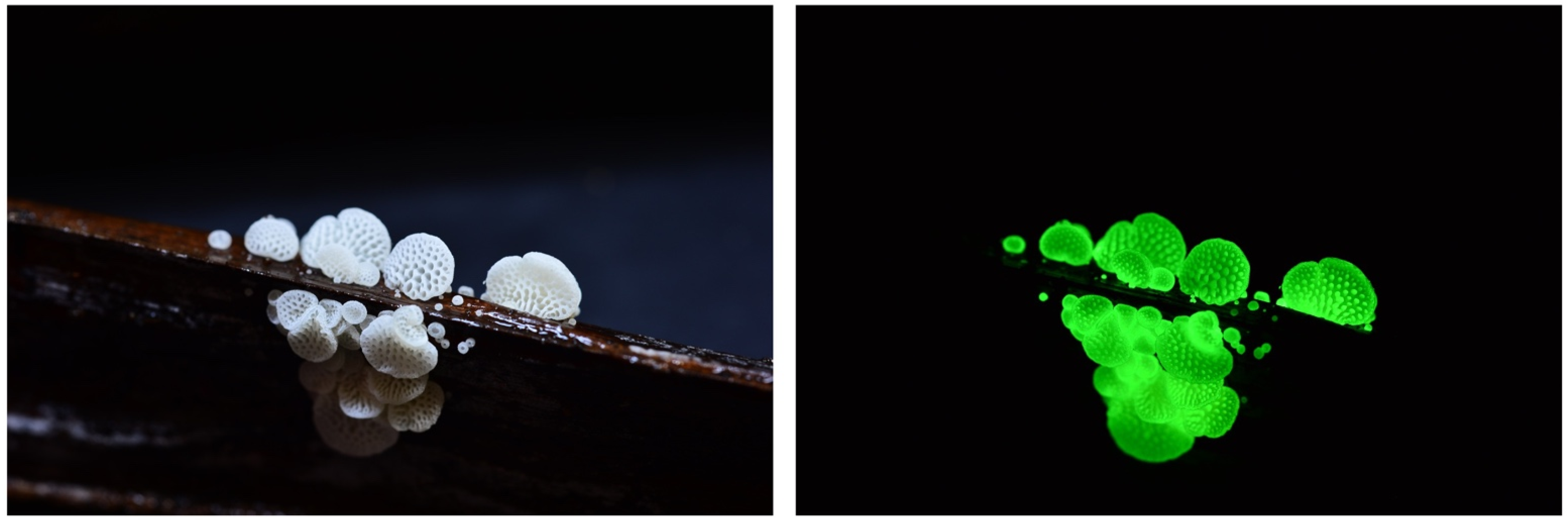
Figure 2. Fruitbody of Favolaschia peziziformis. Photo by So Yamashita on Hachijo Island, Tokyo.
Japanese name: Enashi-rasshi-také [19]
Remarks: This species was originally described from the Bonin Islands but is also known on Hachijo Island, Okinawa and other countries in Australasia [25]. Whole fruitbodies are reported to be bioluminescent. Enashi means the lack of a stipe. Rasshi derives from the genus name Laschia in honor of German mycologist Wilhelm Gottfried Lasch (1787–1863) [23].
Mycena chlorophos (Berk. & M. A. Curtis) Sacc. (Figure 3)
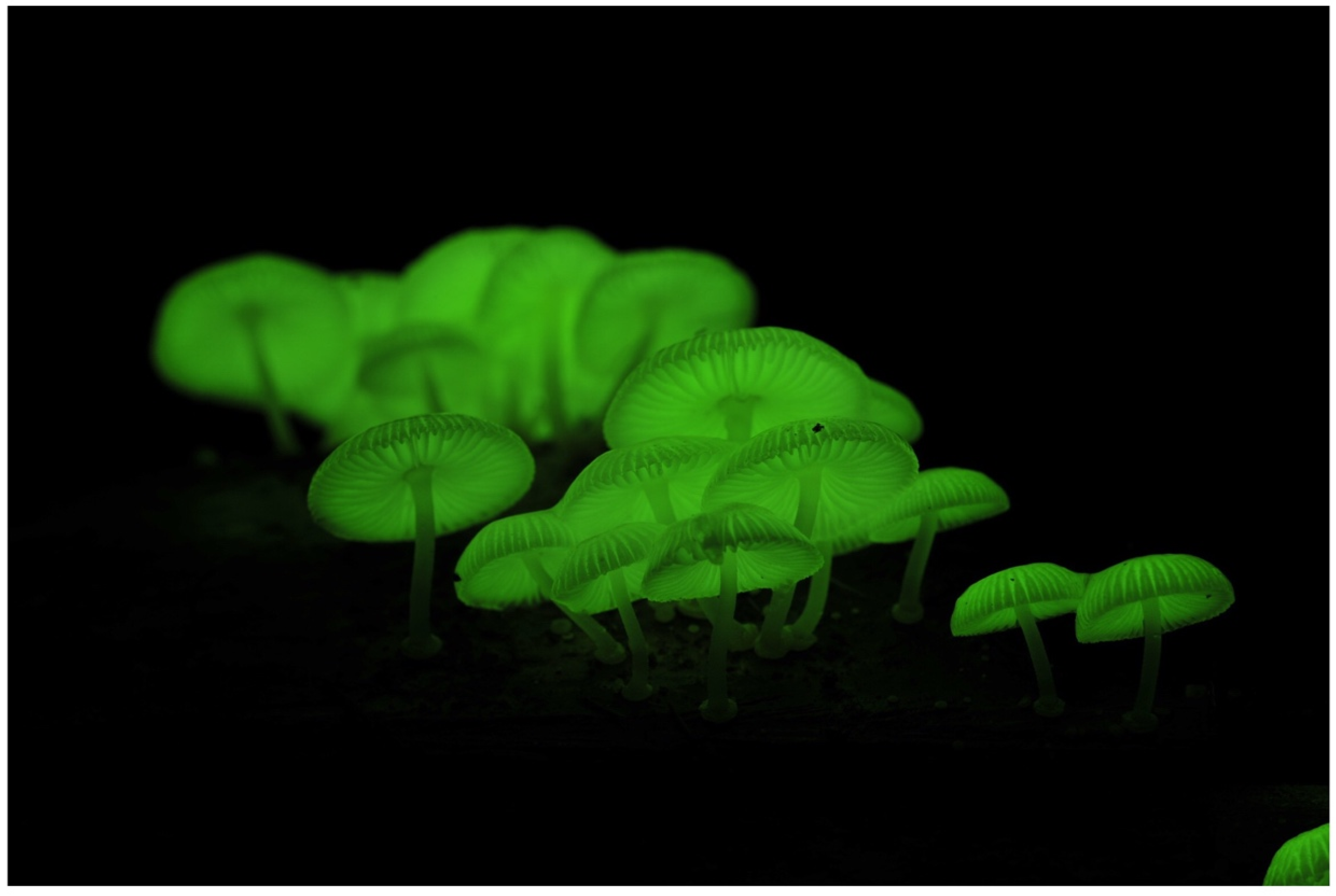
Figure 3. Fruitbody of Mycena chlorophos. Photo by So Yamashita on Hachijo Island, Tokyo.
Japanese name: Yakō-také [19]
Remarks: The Japanese Yakō-také means ‘night-illuminating mushroom’. This species is distributed in Honshu (probably from Aomori, the northernmost prefecture [26]), Shikoku, Kyushu, Izu Islands, and Bonin Islands [27]. In addition, the species is widely recorded in the Southern Pacific islands, e.g., Polynesia and Micronesia [27]. This species is listed in the Japanese Red Data as endangered in Fukushima, Chiba, and Miyazaki Prefectures [28]. The bioluminescence of the fruitbody is considered brighter than many other known luminous mushrooms, but some strains, such as a strain in Miyazaki and Aomori Prefectures, seem darker compared to those in Hachijo and Bonin Islands [29][30]. The draft genome sequence of this species (Hachijo Isl. strain) has been assembled [31]. We consider Mycena cyanophos (Berk. & M.A. Curtis) Sacc. to be a synonym.
Mycena daisyogunensis Kobayasi
Japanese name: Hyūga-yakō-také [19]
Remarks: This species was collected from Daisyogun Cave in Miyazaki Prefecture in Kyushu (Hyūga is an old name of Miyazaki Prefecture) [24], but no further collections have been made since the original description. The taxonomic status of this species warrants further study.
Mycena flammifera Har. Takah. & Taneyama
Japanese name: Mori-no-ayashi-bi [10]
Remarks: The Japanese Morino-ayashi-bi means ‘forest ghost-fire’. This species was described from Ishigaki Island, southern Japan [10]. The morphological differences from the better-known bioluminescent species, M. manipularis (Berk.) Sacc. are subtle, and the taxonomic status of this species warrants further study.
Mycena lazulina Har. Takah., Taneyama, Terashima & Oba (Figure 4)
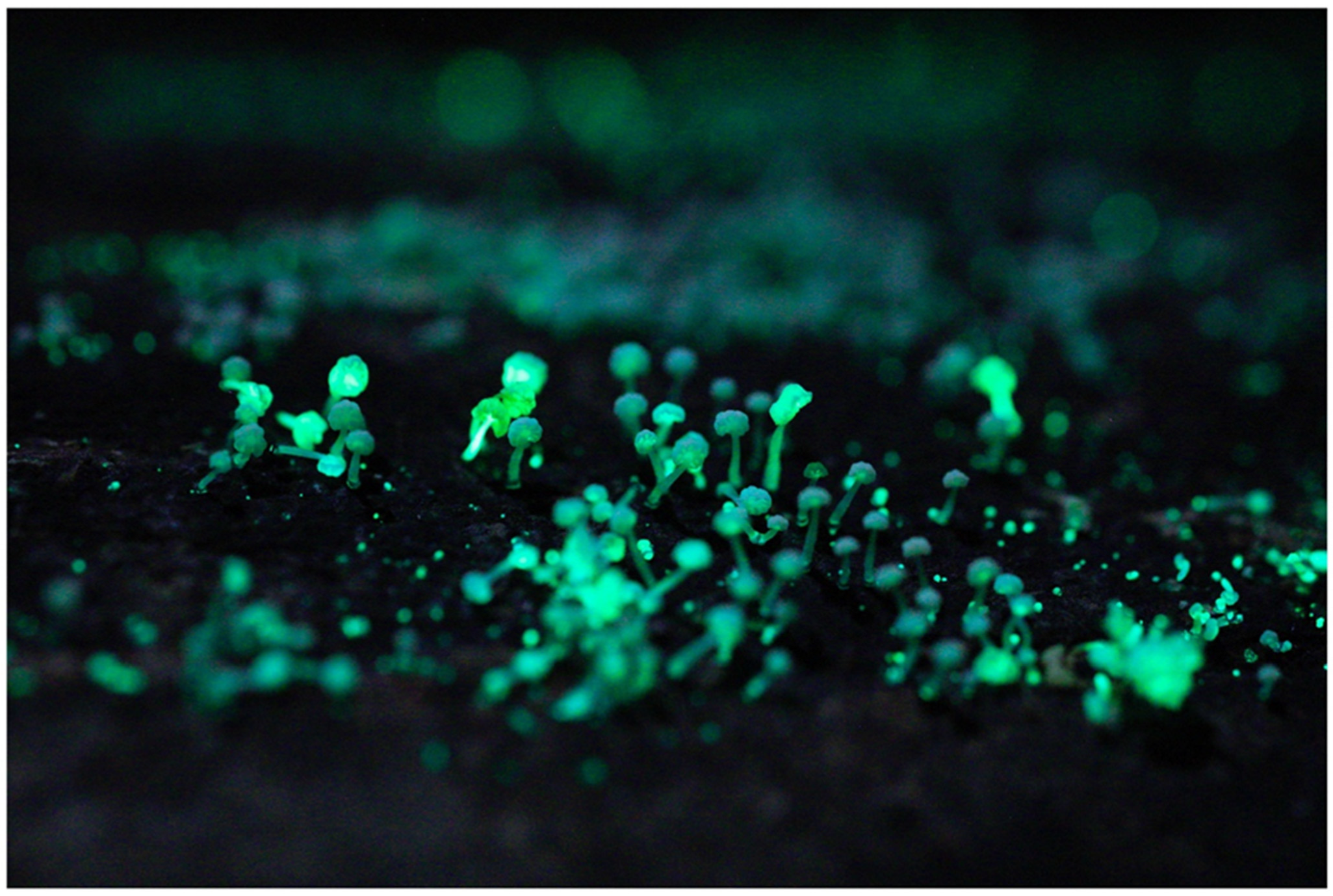
Figure 4. Fruitbody of Mycena lazulina. Photo by Yoshinori Nishino on Iriomote Island, Okinawa Prefecture.
Japanese name: Konruri-kyūban-také [10]
Remarks: The Japanese Konruri-kyūban-také means ‘ultramarine-colored sucker mushroom’ because of the presence of a vivid blue (Konruri) disk-like (Kyūban) base. This species was described from the Yaeyama Islands, southern Japan [10]. Although its morphological characteristics seem to indicate that it belongs to the genus Mycena, the phylogenetic tree presented by Terashima et al. [10] has a very long branch leading to this species. The quality of DNA sequence data warrants further investigation.
Mycena lux-coeli Corner (Figure 5)

Figure 5. Fruitbody of Mycena lux-coeli. Photo by So Yamashita on Hachijo Island, Tokyo.
Remarks: The Japanese Shiino-tomoshibi-také means ‘Castanopsis tree’s lantern mushroom’. This species was originally described from Hachijo Island, but it is currently known from wider areas of central to southern Japan, mostly along the Pacific Ocean [25]. This species is listed in the Red Data as endangered in Mie Prefecture and as vulnerable in Miyazaki Prefecture [28].
Mycena luxfoliata Har. Takah., Taneyama & Terashima
Japanese name: Kareha-yakō-také [10]
Remarks: This species was described from the Ishigaki and Iriomote Islands, southern Japan [10]. Its bioluminescence was observed from mycelia on fallen leaves (Kareha means fallen leaves).
Mycena manipularis (Berk.) Sacc. (Figure 6)
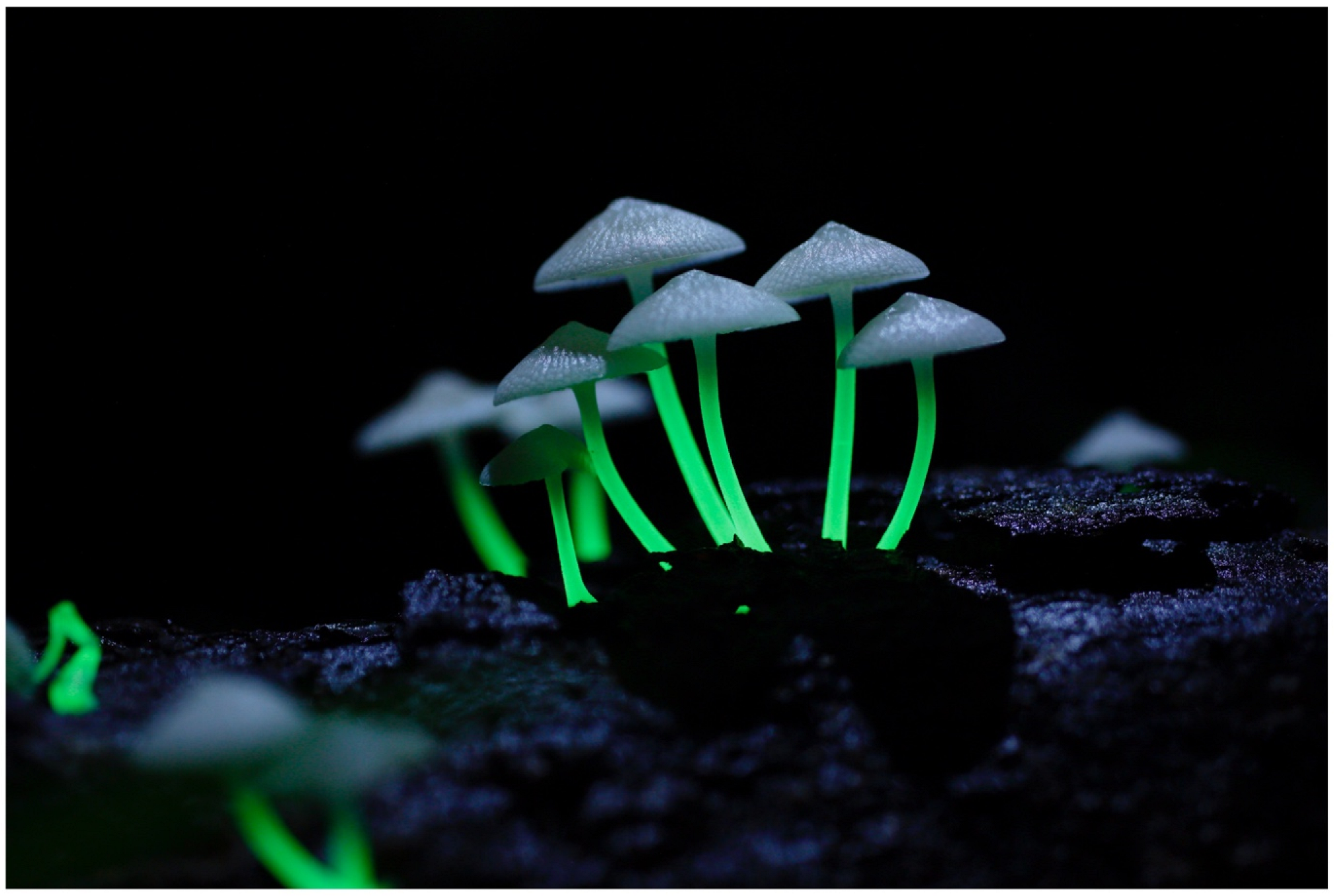
Figure 6. Fruitbody of Mycena manipularis. Photo by Yoshinori Nishino on Ishigaki Island, Okinawa Prefecture.
Syn. Filoboletus manipularis (Berk.) Singer, Polyporus hanedae Kawam.
Japanese name: Ami-hikari-také [19]
Remarks: The Japanese Ami-hikari-také means ‘reticulated luminous mushroom’. This species is known from central to southern Japan and has also been recorded in many other countries, including Indonesia and Australia [25]. It is listed in the Red Data as endangered in Chiba Prefecture and as near threatened in Miyazaki Prefecture [28]. The unique feature of this species is that its stems, rather than caps, are brightly luminous (Figure 6). The bioluminescent property seems erratic; it has been reported for the strain on Okinawa Island that nonluminescent and weak-luminescent fruitbodies sometimes appeared when cultivated in the laboratory [32]. The bioluminescence of the local strain in Miyazaki Prefecture seemed weaker [29]. Currently, the species is often called Filoboletus manipularis (Berk.) Singer.
Mycena pseudostylobates Kobayasi
Japanese name: Kyūbantaké-modoki [19]
Remarks: The Japanese Kyūbantaké-modoki means ‘pseudo sucker-mushroom’. This species was recorded from Miyazaki Prefecture, but no definitive collections have been made since the original description by Kobayasi, 1951 [24]. The taxonomic status of this species warrants further study. The mycelium is bioluminescent, but the luminosity of the fruitbody is unknown [24].
Mycena stellaris Har. Takah., Taneyama & A. Hadano (Figure 7)
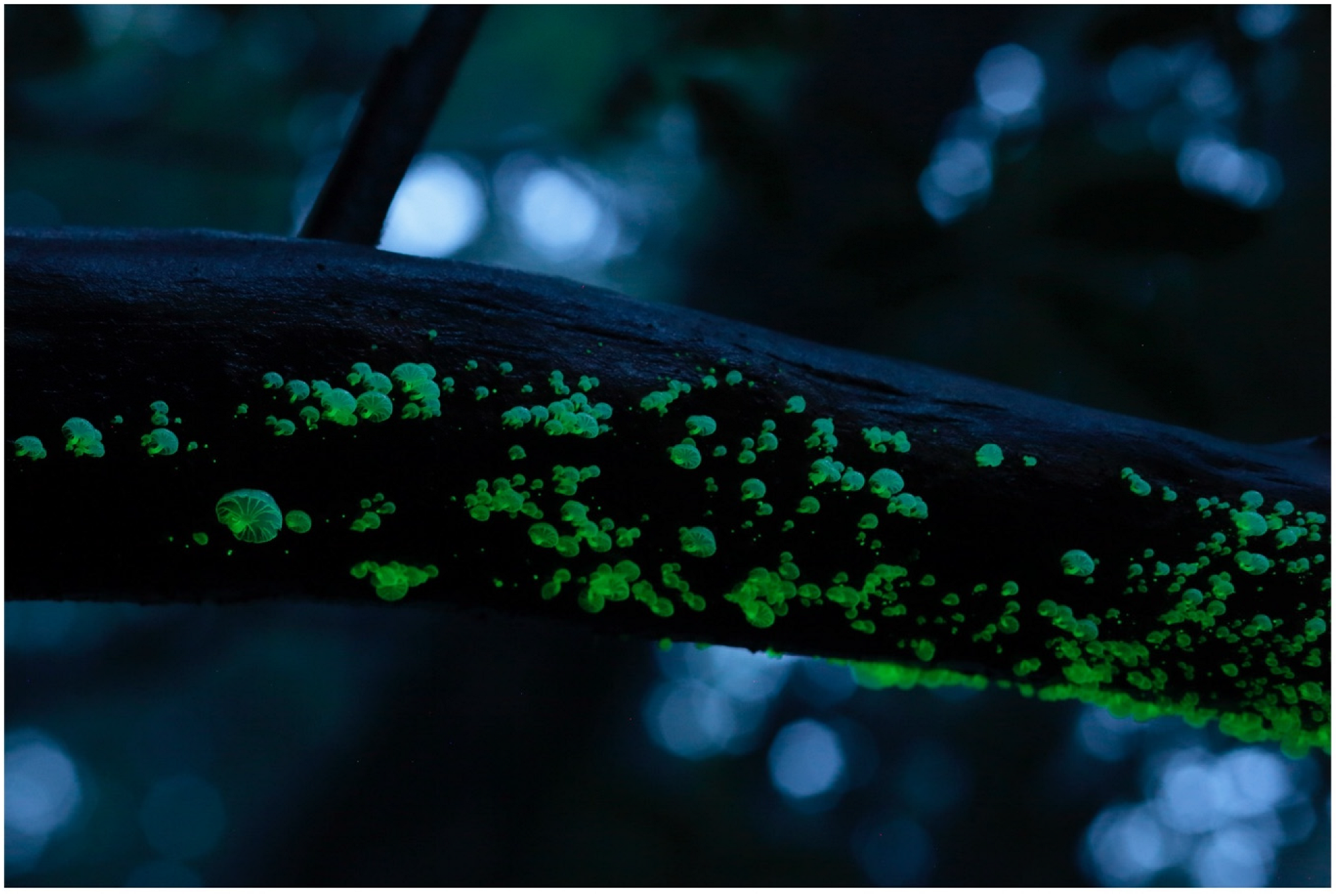
Figure 7. Fruitbody of Mycena stellaris. Photo by Yoshinori Nishino at Kunigami, Okinawa Isl., Okinawa Prefecture.
Japanese name: Hoshino-hikari-také [10]
Remarks: The Japanese Hoshino-hikari-také means ‘starlight mushroom’. This species was described from the Ishigaki and Okinawa Islands, southern Japan [10]. The bioluminescence of the whole fruitbodies was recorded.
Panellus pusillus (Pers. ex Lév.) Burds. & O. K. Mill. (Figure 8)

Figure 8. Fruitbody of Panellus pusillus. Photo by So Yamashita on Hachijo Island, Tokyo.
Remarks: The Japanese name Hinano-uchiwa means ‘princess fan’. This species is known from central to southern Japan but is also widely reported from North and South America and Australasia [25][27]. It often grows on bamboo.
Resiomycena fulgens Har. Takah., Taneyama & Oba (Figure 9)
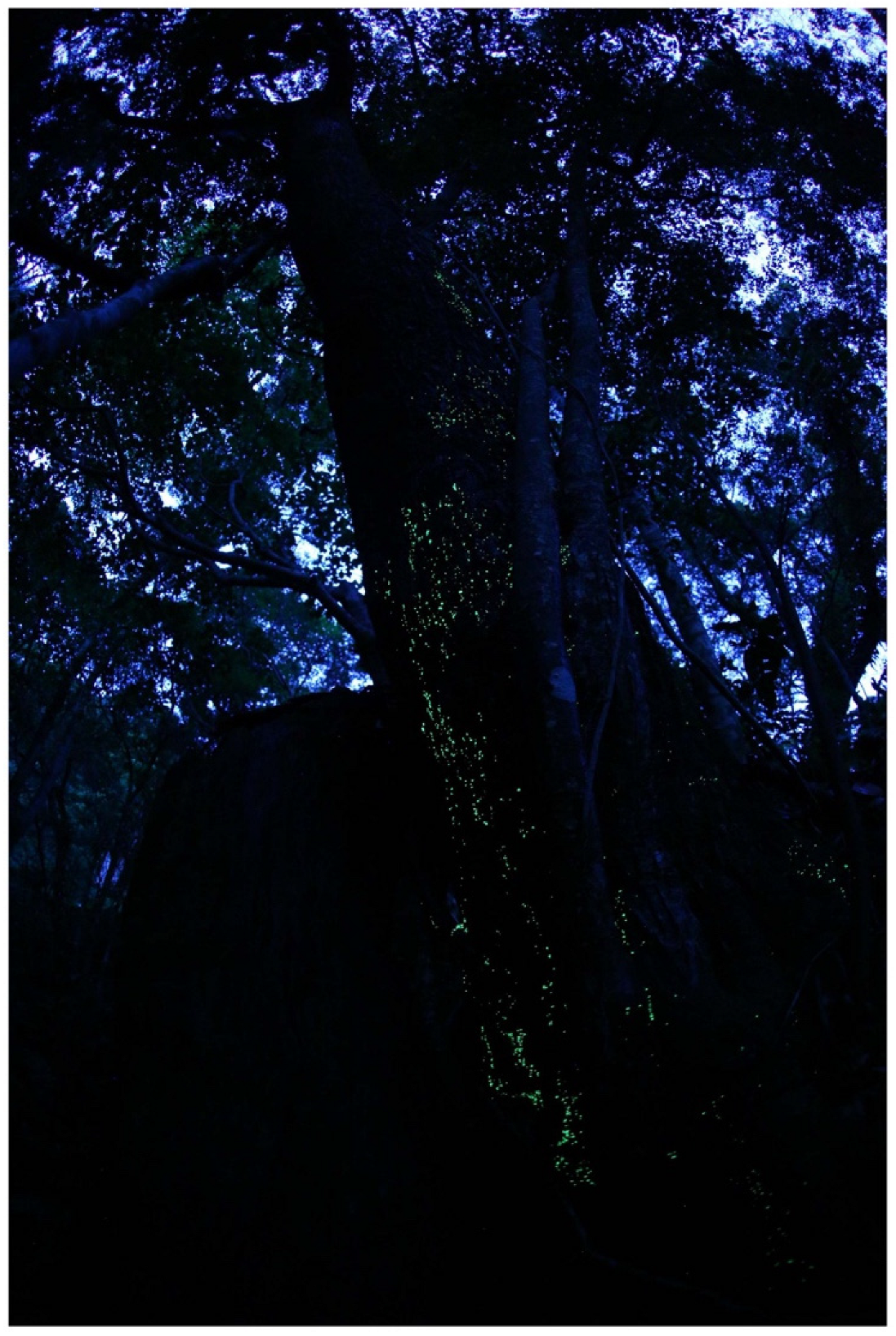
Figure 9. Fruitbody of Resiomycena fulgens. Photo by Takehito Miyatake on Hachijo Island, Tokyo.
Japanese name: Ginga-také [10]
Remarks: This species is known from Yaku Isl. (Kagoshima Prefecture), Hachijo Isl., and Kochi Prefecture [10]. The fruitbodies are small (up to ca. 3 mm), but they often grow in large numbers on the standing timber of Castanopsis, visually evoking an image of the Milky Way (Ginga means the Galaxy or Milky Way). Whole fruitbodies were reported to be bioluminescent [10].
Roridomyces sp.
Japanese name: Aya-hikari-také
Remarks: Its taxonomic status has not been thoroughly studied, but it presumably represents a new species of the genus based on several morphological characteristics. Bioluminescence of Japanese samples (spores) was reported by Kurogi, 2015 [29]. The Japanese name Aya is derived from the fact that the species was discovered from Aya, Miyazaki Prefecture [29]. This species is listed in the Red Data as endangered in Miyazaki Prefecture [28].
2.1.2. Family Omphalotaceae
Marasmiellus lucidus Har. Takah., Taneyama & S. Kurogi
Japanese name: Himé-hotaru-také [10]
Remarks: Hotaru means firefly in Japanese. This species was discovered in Miyazaki Prefecture [10] during a survey of the Himé-botaru firefly (L. parvula) [29]. The whole fruitbodies were reported to be bioluminescent.
Marasmiellus venosus Har. Takah., Taneyama & A. Hadano
Japanese name: Himé-hikari-také [10]
Remarks: The Japanese Himé-hikari-také means ‘princess luminous mushroom’. This species was described from Oita Prefecture in Kyushu [10]. The whole fruitbodies and mycelia are both reported to be bioluminescent. This and the previous species belong to the genus Marasmiellus, but their taxonomic treatment warrants further investigation. Currently, no other species are known to be bioluminescent in the genus Marasmiellus, and their accurate phylogenetic relationship to other bioluminescent species will give important insights into the evolution of bioluminescence in fungi.
Omphalotus japonicus (Kawam.) Kirchm. & O. K. Mill. (Figure 10)
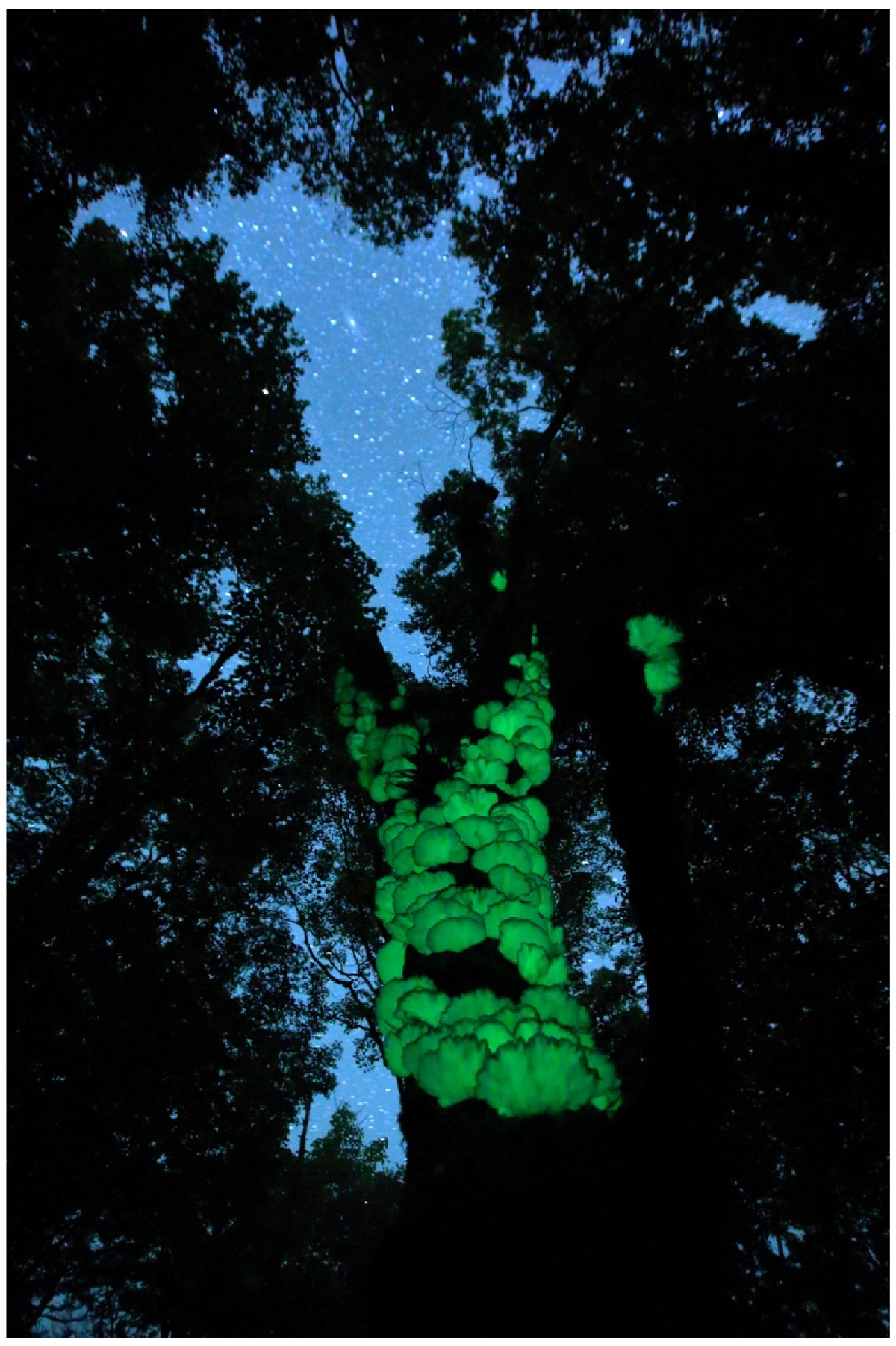
Figure 10. Fruitbody of Omphalotus japonicus. Photo by Yoshinori Nishino at Mt. Odaigahara, Nara Prefecture.
Syn. Lampteromyces japonicus (Kawam.) Sing.
Japanese name: Tsukiyo-také (old names: Watari, Bunano-kataha, Kumahira, Hikari-goke, and Hotaru-také) [19].
Remarks: The Japanese Tsukiyo-také means ‘moonlit-night mushroom’. This species is distributed widely in mainland Japan and is thus arguably one of the most well-known bioluminescent mushrooms in Japan. An anecdote in the mid-Edo Period (ca. 1800s), “Zoku Sanshū Kidan”, introduced a story called “Nanao Kōrin” where there was a bright luminescent mushroom called Yamiyo-také, meaning black-night mushroom, in Nanao (the current Nanao City in Ishikawa Prefecture); it claimed that the luminescence was strong enough to illuminate 1 m square when holding 2–3 pieces “like noon” [33].
Of course, this story most likely contains some hearsay exaggeration (the true luminescence of O. japonicus is such that “the fungi of different sizes could be easily recognized at a distance of thirty meters” in pitch dark, and of course not like noon, [4]), but this mushroom could possibly be O. japonicus because the story also introduces its gastrointestinal toxicity for humans, which is a characteristic property of this species [34]. The poisonousness of this species is well recognized in Japan because the fruitbody is similar to several Japanese edible species, including Pleurotus ostreatus (Hira-také, in Japanese), Pleurotus pulmonarius (Usu-hirataké), Lentinula edodes (Shii-také), and Sarcomyxa edulis (Muki-také), such that it is often consumed mistakenly [35][36]. In the 12th century tale “Konjaku Monogatarishū”, there is a story where a priest in Nara planned to kill his old supervisor to obtain the supervisor’s position by serving cooked O. japonicus (old Japanese name, Watari) under the guise of the edible mushroom P. ostreatus. Eventually, the old supervisor ate all of the mushroom dishes and said, “For years, this old priest has never had such deliciously cooked watari”; the old supervisor knew all along, but he was of a special constitution such that he never got affected by the toxin [37].
Currently, Japan experiences approximately 30 cases of mushroom poisoning annually, and the cases of O. japonicus are among the highest every year, accounting for approximately 50% of the cases [38]. The primary toxic substance was isolated and identified as illudin S (lampterol) by two Japanese organic chemists, Koji Nakanishi (1925–2019) and Takeshi Matsumoto (1923–2014) [39][40]. The major symptoms of the toxin are vomiting, diarrhea, and stomachache. In one case, curiously, “They felt dizzy and everything around them appeared blue to their eyes. Moreover, they experienced a feeling as if a number of fire-flies were flying around them” [4]. The draft genome sequence of this species (Korean cultivar) was assembled, and bioluminescence-related genes were identified [41]. Haneda reported weak luminescence of the spore mass on moist paper based on specimens collected from Akita Prefecture [42]. This species has an essential role in beech log decomposition in cool temperate forest floors in Japan [43], and because of the recent decline in natural beech forests, it is listed in some prefectural Red Data as a threatened species (e.g., Mie, Osaka, and Shimane Prefectures) [28]. Tsukiyo-také is one of the seasonal terms of the Japanese short poetry Haiku for mid-autumn [44].
“Wolves wander along/mountain trails, their ways lit by/moonlit-night mushrooms”, Kansuke Naka (1885–1965, a Japanese novelist, essayist, and poet) (translated by Nathaniel Guy [3], and his personal communication).
2.1.3. Family Physalacriaceae (Figure 11)
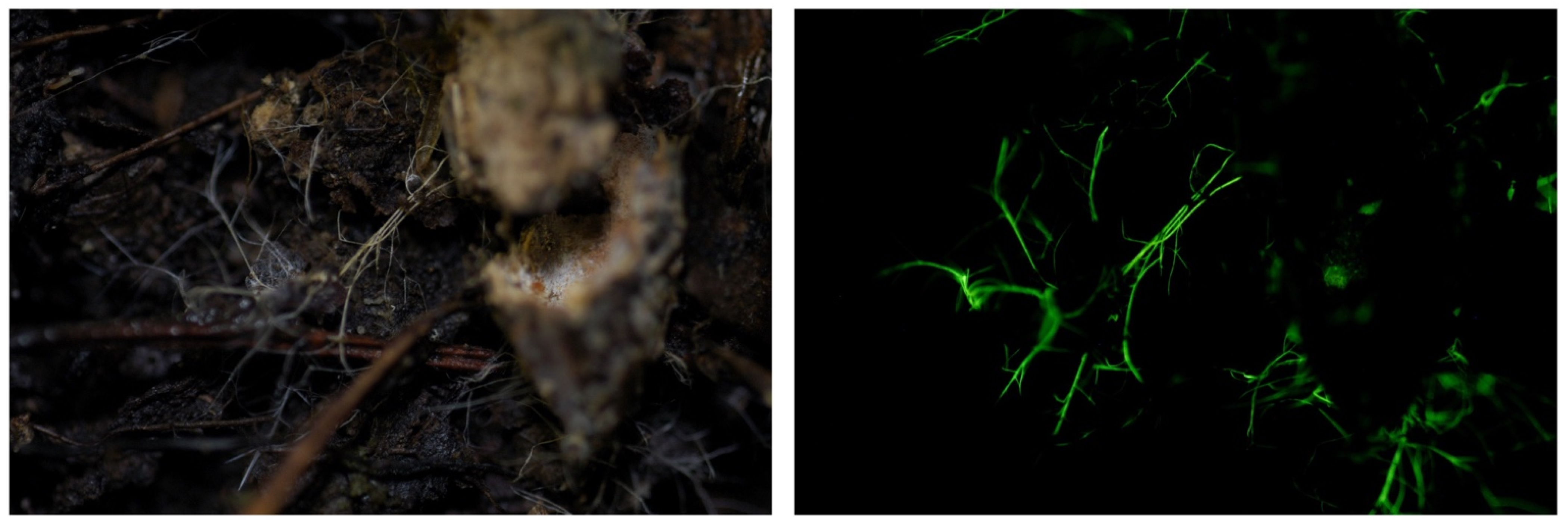
Figure 11. Rhizomorphs of Armillaria sp. Photo by So Yamashita on Hachijo Island, Tokyo.
Armillaria cepistipes Velen.
Japanese name: Kuroge-narataké [19]
Remarks: Bioluminescence of Japanese samples (mycelium) was reported by Hiroi, 2006 [45]. Japanese Kuroge means black hair.
Armillaria gallica Marxmuller & Romagn.
Remarks: Bioluminescence of Japanese samples (mycelium) was reported by Hiroi, 2006 [45]. Luminescence of the rhizomorphs has been reported elsewhere [46] but not from the Japanese samples. The fruitbodies of several Armillaria species, including A. gallica and A. mellea, are popular in Japan as a tasty edible mushroom species [27]. Japanese Narataké means ‘oak mushroom’, although the Armillaria species also grow on other varieties of tree. Watage means fluff because the veil of this mushroom is covered by a fluff-like structure [47]. Yawa means soft.
Armillaria mellea (Vahl) P. Kumm.
Remarks: Bioluminescence of Japanese samples (mycelium), which are sometimes called Armillaria mellea subsp. nipponica J.Y. Cha & Igarashi, was reported by Hiroi, 2006 [45]. Luminescence of young rhizomorphs is also reported [27]. Japanese Harigane and Kuri mean wire and chestnut tree, respectively.
Armillaria nabsnona T. J. Volk & Burds.
Japanese name: Yachi-narataké [19]
Remarks: Bioluminescence of Japanese samples (mycelium) was reported by Hiroi, 2006 [45]. Japanese Yachi means marsh land because this species appears in marsh areas [36].
Armillaria ostoyae (Romagn.) Herink
Remarks: Bioluminescence of Japanese samples (mycelium) was reported by Hiroi, 2006 [45]. Japanese Oni and Tsuba mean a Yōkai ogre and mushroom ring (annulus) [23]. The mushroom possesses an obvious veil. Rough scales on the cap evoke the image of violent Oni [47].
Armillaria sp.
Japanese name: Kitsubu-narataké [48]
Remarks: Its taxonomic status has not been thoroughly studied, but it presumably represents a new species of the genus based on several morphological characteristics. Bioluminescence of Japanese samples (mycelium) was reported by Hiroi, 2006 [45]. In Japanese, kitsubu means yellow dots, referring to this characteristic of the cap surface.
Desarmillaria tabescens (Scop.) R. A. Koch & Aime
Syn. Armillaria tabescens (Scop.) Emel
Japanese name: Narataké-modoki [19]
Remarks: Luminescence intensities of the fruitbody measured by a chemiluminescence detector largely depend on the specimens, but even in the most luminescent specimen, the light was too weak to be observed by the human eye [45][49]. Luminescent intensities of the mycelia also vary, but some could be clearly observed by the human eye [45][49]. The luminescence intensities are correlated with the strains of fruitbody and mycelium, suggesting that the luminescence characteristics are hereditary [45][49]. The species has long been known as Armillaria tabescens but was recently transferred to a newly established genus, Desarmillaria [50]. Japanese -modoki means pseudo, because this mushroom is similar to that of Narataké (A. mellea), but it possesses no veil [47]. This mushroom is regarded as edible but can cause gastrointestinal disorders when consumed in large quantities [29].
2.1.4. Family Pleurotaceae
Pleurotus nitidus Har. Takah. & Taneyama (Figure 12)
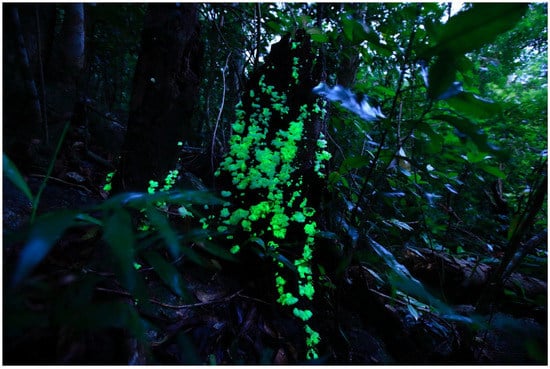
Figure 12. Pleurotus nitidus. Photo by Yoshinori Nishino on Ishigaki Island, Okinawa Prefecture.
Japanese name: Shiro-hikari-také [10]
Remarks: The Japanese Shiro-hikari-také means ‘white luminescent mushroom’. This species from Ishigaki and Iriomote Islands, southern Japan, was described as being new [10]. However, it probably needs to be transferred to other genera containing bioluminescent species, such as Neonothopanus or Nothopanus, based on its morphological characteristics. Currently, no bioluminescent species are known from the genus Pleurotus and closely related genera. The only exception can be seen in Pleurotus eugrammus [9], but it is now treated as Nothopanus eugrammus, a species more closely related to Omphalotus and only distantly related to Pleurotus [51].
2.2. Nonbioluminescent Species Based on Samples Collected from Japan
Panellus stipticus (Bull.) P. Karst.
Remarks: The Japanese name is Wasabi-také because of the strong pungent taste of the fruitbody, similar to ‘wasabi’, a spicy green paste served with sushi [27][52]. It is widely distributed in the world [25][27]. The North American population of this species is luminescent, but the European and Japanese strains are nonluminescent. The North American and European strains are interfertile, and luminosity is dominant over nonluminosity [53]. Samples from Turkey (nonbioluminescent) lack the genes related to bioluminescence (luciferase, hispidin-3-hydroxylase, and hispidin synthetase) in the genome [14]. Fruitbodies are frequently attacked by slugs, which may be important agents in the dispersal of their spores [54], but their involvement in bioluminescence for the attraction of dispersers is unknown (see Section 7). Japanese Kawaki- means ‘dried-’.
2.3. Potentially Bioluminescent Species in Japan
There are several fungal species that have been reported to be bioluminescent elsewhere but not in Japan. Some (probably most) of these species are bioluminescent at least in mycelial stages. According to Desjardin et al., “mycelium of most (if not all) Armillaria species is luminescent” [9], and thus the Armillaria species, in which bioluminescence has not been reported in Japan, might also be bioluminescent: for example, A. jezoensis Cha & Igarashi (Japanese name, Kobari-narataké [19]), A. singula J. Y. Cha & Igarashi (Hitori-narataké [19]), and A. tympanitica (Berk. & M. A. Curtis) Sacc. (which has no Japanese name, but was collected once from Bonin Isl. [55], although Ito suggested its species identification was doubtful [56]). Since bioluminescence of Gerronema viridilucens mycelia and fruitbodies has recently been reported from Brazil [57], the congeneric species recorded from Japan (such as G. holochlorum and G. nemorale) may also be bioluminescent. Table 1 summarizes the species reported to be bioluminescent elsewhere but not in Japan.
Table 1. Potentially bioluminescent species in Japan.
| Taxon | Japanese Name (*1) | Bioluminescence (References) (*2) |
|---|---|---|
| Family Mycenaceae | ||
| Mycena epipterygia (Scop.) S.F. Gray | Nameashi-také | Mycelium (Bothe, 1931 [58]; Wassink, 1978 [46], 1979 [8]; Desjardin et al., 2008 [9]) |
| Mycena galopus (Pers.) P. Kumm. | Nise-chishio-také | Mycelium (Bothe, 1931 [58]; Berliner, 1961 [59]; Wassink, 1978 [46], 1979 [8]; Treu & Agerer, 1990 [60]; Desjardin et al., 2008 [9]) |
| Mycena haematopus (Pers.) P. Kumm. | Chishio-také | Mycelium (Treu & Agerer, 1990 [60]; Bermudes et al., 1992 [61]; Desjardin et al., 2008 [9]): Basidiomes (weak) (Bermudes et al., 1992 [61]; Desjardin et al., 2008 [9]) |
| Mycena inclinata (Fr.) Quél. | Sembon-ashinaga-také | Mycelium (Wassink, 1978 [46], 1979 [8]; Desjardin et al., 2008 [9]) |
| Mycena olivaceomarginata (Massee) Massee | Fuchidori-kunugitaké (*3) | Mycelium (Wassink, 1978 [46], 1979 [8]; Desjardin et al., 2008 [9]) |
| Mycena pura (Pers.) P. Kumm. (*4) | Sakura-také | Mycelium (Treu & Agerer, 1990 [60]; Desjardin et al., 2008 [9]): gill of basidiome (Bothe, 1931 [58]; Wassink, 1978 [46], 1979 [8]) |
| Mycena rosea (Bull.) Gramberg | Sakurairo-také [36] | Mycelium (Treu & Agerer, 1990 [60]; Desjardin et al., 2008 [9]) |
| Mycena sanguinolenta (Alb. & Schwein.) P. Kumm. | Himé-chishio-také | Mycelium (Bothe, 1931 [58]; Wassink, 1978 [46], 1979 [8]; Desjardin et al., 2008 [9]) |
| Mycena stylobates (Pers.) P. Kumm. | Kyūban-také | Mycelium (Bothe, 1931 [58]; Wassink, 1978 [46], 1979 [8]; Desjardin et al., 2008 [9]) |
| Roridomyces roridus (Fr.) Rexer | Nunawa-také | Mycelium (Josserand, 1953 [62]; Wassink, 1978 [46], 1979 [8]; Desjardin et al., 2008 [9]) |
| Family Physalacriaceae | ||
| Armillaria fuscipes Petch (*5) | Ashiguro-narataké [63] | Mycelium (Wassink, 1978 [46], 1979 [8]; Berliner, 1961 [59]; Desjardin et al., 2008 [9]): Rhizomorph (Wassink, 1978 [46]) |
| Armillaria sinapina Berube & Dessur. | Hotei-narataké | Mycelium (Mihail, 2015 [64]) |
| Desarmillaria ectypa (Fr.) R.A. Koch & Aime | Yachihiro-hidataké | Mycelium, rhizomorph, basidiomes (Ainsworth, 2004 [65]) |
*1. The Japanese names were adopted from the list by Katumoto, 2010 [19], unless they have a more recent name. *2. Question marks represent the references showing that luminescence is doubtful or worth further investigation. Wassink (1948) [66] was not referenced in this list because his recent review papers [8][46] are considered updated versions of it. *3. Hongo (1989) [67] suggested that Mycena neoavenacea may be the same species as Mycena olivaceomarginata. *4. Molecular analysis suggests that the current M. pura morphospecies represent the species complex [68], and the bioluminescent ability of each phylospecies is unknown. *5. The morphological characteristics of this mushroom (named Ashiguro-narataké in Japanese, from Amami-Oshima) appeared indistinguishable from those of A. fuscipes, but the species name was not confirmed [69].
References
- Hosoya, T. History and the current status of fungal inventory and databasing in Japan. In Proceedings of the 7th and 8th Symposia on Collection Building and Natural History Studies in Asia and the Pacific Rim; Tomida, Y., Kubodera, T., Akiyama, S., Kitayama, T., Eds.; National Science Museum Monographs: Ibaraki, Japan, 2006; pp. 51–61.
- Sugahara, T. Japanese and mushrooms. J. Cook. Sci. Jpn. 2001, 34, 313–320.
- Guy, N. Kinoko: A Window into the Mystical World of Japanese Mushrooms; Amazon on Demand: Seattle, WA, USA, 2023; ISBN 979-8987537671.
- Kawamura, S. Studies on the luminous fungus, Pleurotus japonicus sp. nov. J. Coll. Sci. Tokyo Imp. Univ. 1915, 35, 1–29.
- Kobayasi, Y. Seven luminous mycomycetes from Bonin Islands. Bull. Biogeographic. Soc. Jpn. 1937, 7, 1–7.
- Corner, E.J.H. Further description of luminous agarics. Trans. Br. Mycol. Soc. 1954, 37, 256–271.
- Corner, E.J.H. The Marquis: A Tale of Syonan-to; Heinemann Asia: Kuala Lumpur, Singapore, 1981.
- Wassink, E.C. On Fungus Luminescence; Mededelingen Landbouwhogeschool; Wageningen, H. Veenman & Zonen: Wageningen, The Netherlands, 1979.
- Desjardin, D.E.; Oliveira, A.G.; Stevani, C.V. Fungi bioluminescence revisited. Photochem. Photobiol. Sci. 2008, 7, 170–182.
- Terashima, Y.; Takahashi, H.; Taneyama, Y. The Fungal Flora in Southwestern Japan: Agarics and Boletes; Tokai University Press: Kanagawa, Japan, 2016.
- Cortés-Pérez, A.; Desjardin, D.E.; Perry, B.A.; Ramírez-Cruz, V.; Ramírez-Guillén, F.; Villalobos-Arámbula, A.R.; Rockefeller, A. New species and records of bioluminescent Mycena from Mexico. Mycologia 2019, 111, 319–338.
- Chang, C.-C.; Chen, C.-Y.; Lin, W.-W.; Kao, H.-W. Mycena jingyinga, Mycena luguensis, and Mycena venus: Three new species of bioluminescent fungi from Taiwan. Taiwania 2020, 65, 396–406.
- Nishino, Y.; Oba, Y. Luminous Mushrooms with Night Forests; Iwanami Shoten Pub.: Tokyo, Japan, 2013. (In Japanese)
- Kotlobay, A.A.; Sarkisyan, K.S.; Mokrushina, Y.A.; Marcet-Houben, M.; Serebrovskaya, E.O.; Markina, N.M.; Somermeyer, L.G.; Gorokhovatsky, A.Y.; Vvedensky, A.; Purtov, K.V.; et al. Genetically encodable bioluminescent system from fungi. Proc. Natl. Acad. Sci. USA 2018, 115, 12728–12732.
- Ke, H.–M.; Lee, H.–H.; Lin, C.–Y.I.; Liu, Y.–C.; Lu, M.R.; Hsieh, J.–W.H.; Chang, C.–C.; Wu, P.–H.; Lu, M.J.; Li, J.–Y.; et al. Mycena genomes resolve the evolution of fungal bioluminescence. Proc. Natl. Acad. Sci. USA 2020, 117, 31267–31277.
- Tanaka, N. On the report about Japanese poisonous mushrooms part 1 by Kichindo Inoko. J. Plant Res. 1889, 3, 47–51. (In Japanese)
- Haneda, Y. Luminous Organisms of Japan and the Far East. In The Luminescence of Biological Systems; Johnson, F.H., Ed.; American Association for the Advancement of Science: Washington, DC, USA, 1955; pp. 335–385.
- Chew, A.L.C.; Tan, Y.-S.; Desjardin, D.E.; Musa, M.Y.; Sabaratnam, V. Taxonomic and phylogenetic re-evaluation of Mycena illuminans. Mycologia 2013, 105, 1325–1335.
- Katumoto, K. List of Fungi Recorded in Japan; The Kanto Branch of the Mycological Society of Japan: Tokyo, Japan, 2010. (In Japanese)
- Iwama, A. An unexpected finding of the luminescent Cruentomycena. Mycol. Circ. Jpn. 2020, 213, 2–3. (In Japanese)
- Takahashi, H. An impact on the finding of the luminescent Cruentomycena by Ami Iwama. Mycol. Circ. Jpn. 2020, 213, 4. (In Japanese)
- Taneyama, Y. Cruentomycena was bioluminescent! Mycol. Circ. Jpn. 2020, 213, 5. (In Japanese)
- Okuzawa, Y.; Okuzawa, M. Mushroom Etymology and Dialect Dictionary; Yama-Kei Pub.: Tokyo, Japan, 1998. (In Japanese)
- Kobayasi, Y. Contributions to the luminous fungi from Japan. J. Hattori Bot. Lab. 1951, 5, 1–6.
- GBIF.org. GBIF Home Page. 2023. Available online: https://www.gbif.org (accessed on 19 April 2023).
- Kawai, D. Handbook of Mushrooms in Oirase Stream (Oirase Keiryu, Kinoko Handbook), Spring—Early Summer; NPO Oiken: Aomori, Japan, 2022. (In Japanese)
- Imazeki, R.; Hongo, T. Colored Illustrations of Mushrooms of Japan, Vol. I.; Hoikusha: Osaka, Japan, 1987. (In Japanese)
- Search System of Japanese Red Data; Association of Wildlife Research and EnVision. Available online: http://jpnrdb.com/index.html (accessed on 15 April 2023).
- Kurogi, S. Mushrooms in Miyazaki Prefecture (Miyazaki no Kinoko); Komyakusha: Miyazaki, Japan, 2015. (In Japanese)
- Miyatake, T. Luminous mushrooms (World of Wonders); Fukuinkan Shoten: Tokyo, Japan, 2023. (In Japanese)
- Tanaka, Y.; Kasuga, Y.; Oba, Y.; Hase, S.; Sakakibara, Y. Genome sequence of the luminous mushroom Mycena chlorophos for searching fungal bioluminescence genes. Luminescence 2014, 29, 47–48.
- Miyagi, G. Notes on luminous fungi, Filoboletus manipularis, on Okinawa. Bull. Coll. Sci. Univ. Ryukyus 1960, 4, 77–87. (In Japanese)
- Hioki, K. (Ed.) Sanshu Kidan; Ishikawa Prefecture Library Association: Ishikawa, Japan, 1933. (In Japanese)
- Kawamura, S. Studies on a luminous fungus, Pleurotus japonicus sp. nov. Bot. Mag. Tokyo 1910, 24, 165–177.
- Neda, H. Kinoko Museum; Yasaka Shobo: Tokyo, Japan, 2014. (In Japanese)
- Kudo, S. Macrofungi of Aomori; Access 21 Pub.: Aomori, Japan, 2017. (In Japanese)
- Dykstra, Y.K. (Translator). The Konjaku Tales. Japanese section (Honcho-Hen)(III) from a Medieval Japanese Collection; Kansai Gaidai Univ. Pub.: Osaka, Japan, 2003.
- Watari, T.; Tachibana, T.; Okada, A.; Nishikawa, K.; Otsuki, K.; Nagai, N.; Abe, H.; Nakano, Y.; Takagi, S.; Amano, Y. A review of food poisoning caused by local food in Japan. J. Gen. Fam. Med. 2021, 22, 15–23.
- Nakanishi, K.; Ohashi, M.; Tada, M.; Yamada, Y. Illudin S (lampterol). Tetrahedron 1965, 21, 1231–1246.
- Matsumoto, T.; Shirahama, H.; Ichihara, A.; Fukuoka, Y.; Takahashi, Y.; Mori, Y.; Watanabe, M. Structure of lampterol (illudin S). Tetrahedron 1965, 21, 2671–2676.
- Kim, J.; Park, M.-J.; Shim, D.; Ryoo, R. De novo genome assembly of the bioluminescent mushroom Omphalotus guepiniiformis reveals an Omphalotus-species lineage of the luciferase. Genomics 2022, 114, 110514.
- Haneda, Y. Luminous Organisms; Kouseisha-Kouseikaku: Tokyo, Japan, 1985. (In Japanese)
- Fukasawa, Y.; Osono, T.; Takeda, H. Beech log decomposition by wood-inhabiting fungi in a cool temperate forest floor: A quantitative analysis focused on the decay activity of a dominant basidiomycete Omphalotus guepiniformis. Ecol. Res. 2010, 25, 959–966.
- Ooka, M. Easy-Access Index of Haiku Seasonal Words (Autumn); Yushikan: Tokyo, Japan, 2005. (In Japanese)
- Hiroi, M. On the luminescence of mushrooms. Kinoko-ken Dayori 2006, 28, 10–20. (In Japanese)
- Wassink, E.C. Luminescence in Fungi. In Bioluminescence in Action; Herring, P.J., Ed.; Academic Press: New York, NY, USA, 1978; pp. 171–197.
- Nakajima, A. Kinoko Zukan; Natsume Pub.: Tokyo, Japan, 2017. (In Japanese)
- Kudo, S.; Tezuka, Y.; Yonaiyama, H. Fungi of Aomori; Graph Aomori: Aomori, Japan, 1998. (In Japanese)
- Hiroi, M. Light emission of Armillaria tabescens (Scop.:Fr.) Emel–Measurement of light emission of mushrooms using chemiluminescence detector–. Bull. Koriyama Women’s Univ. 2013, 49, 179–189.
- Koch, R.A.; Wilson, A.W.; Séne, O.; Henkel, T.W.; Aime, M.C. Resolved phylogeny and biogeography of the root pathogen Armillaria and its gasteroid relative, Gyanogaster. BMC Evol. Biol. 2017, 17, 33.
- Moncalvo, J.-M.; Lutzoni, F.M.; Rehner, S.A.; Johnson, J.; Vilgalys, R. Phylogenetic relationships of agaric fungi based on nuclear large subunit ribosomal DNA sequences. Syst. Biol. 2000, 49, 278–305.
- Imazeki, R.; Otani, Y.; Hongo, T. Mushrooms in Japan; Yama-Kei Pub.: Tokyo, Japan, 1988. (In Japanese)
- Macrae, R. Interfertility studies and inheritance of luminosity in Panus stypticus. Can. J. Res. 1942, 20c, 411–434.
- Dickinson, C.; Lucas, J. (Eds.) . The Encyclopedia of Mushrooms; G. P. Putnam’s Sons: New York, NY, USA, 1979.
- Berkeley, M.J.; Curtis, M.A. Characters of new fungi, collected in the North Pacific Exploring Expedition by Charles Wright. Proc. Amer. Acad. Arts Sci. 1860, 4, 111–130.
- Ito, S. Mycological Flora of Japan. Vol. II. Basidiomycetes No. 5. Agaricales, Gasteromycetales; Yokendo: Tokyo, Japan, 1959. (In Japanese)
- Desjardin, D.E.; Capelari, M.; Stevani, C.V. A new bioluminescent agaric form São Paulo, Brazil. Fung. Div. 2005, 18, 9–14.
- Bothe, F. Über das Leuchten verwesender Blätter und seine Erreger. Planta 1931, 14, 752–765. (In Germany)
- Berliner, M.D. Studies in fungal luminescence. Mycologia 1961, 53, 84–90.
- Treu, R.; Agerer, R. Culture characteristics of some Mycena species. Mycotaxon 1990, 38, 279–309.
- Bermudes, D.; Petersen, R.H.; Nealson, K.H. Low-level bioluminescence detected in Mycena haematopus basidocarps. Mycologia 1992, 84, 799–802.
- Josserand, M. Sur la luminescence de “Mycena rorida” en Europe occidentale. Bull. Mens. Soc. Linn. Lyon 1953, 22, 99–102.
- Neda, H.; Sato, H. New record of Armillaria fuscipes Petch from Japan. In Abstract of Papers Presented at the 53th Annual Meeting of the Mycological Society of Japan; The Mycological Society of Japan: Tokyo, Japan, 2009; p. 48. (In Japanese)
- Mihail, J.D. Bioluminescence patterns among North American Armillaria species. Fungal Biol. 2015, 119, 528–537.
- Ainsworth, M. Searching for luminous mushrooms of the marsh fungus Armillaria ectypa. Field Mycol. 2004, 5, 142–144.
- Wassink, E.C. Observations on the luminescence in fungi, I, including a critical review of the species mentioned as luminescent in literature. Recueil Trav. Bot. Neerl. 1948, 41, 150–212.
- Hongo, T. New taxa of the Agaricales published by T. Hongo from 1973 to 1988. Trans. Mycol. Soc. Jpn. 1989, 30, 499–504.
- Harder, C.B.; Laæssøe, T.; Frøslev, T.G.; Ekelund, F.; Rosendahl, S.; Kjøller, R. A three-gene phylogeny of the Mycena pura complex reveals 11 phylogenetic species and shows ITS to be unreliable for species identification. Fungal Biol. 2013, 117, 764–775.
- Ota, Y.; Kim, M.-S.; Neda, H.; Klopfenstein, N.B.; Hasegawa, E. The phylogenetic position of an Armillaria species from Amami-Oshima, a subtropical island of Japan, based on elongation factor and ITS sequences. Mycoscience 2011, 52, 53–58.
More
Information
Subjects:
Mycology
Contributors
MDPI registered users' name will be linked to their SciProfiles pages. To register with us, please refer to https://encyclopedia.pub/register
:
View Times:
3.8K
Revisions:
3 times
(View History)
Update Date:
31 May 2023
Notice
You are not a member of the advisory board for this topic. If you want to update advisory board member profile, please contact office@encyclopedia.pub.
OK
Confirm
Only members of the Encyclopedia advisory board for this topic are allowed to note entries. Would you like to become an advisory board member of the Encyclopedia?
Yes
No
${ textCharacter }/${ maxCharacter }
Submit
Cancel
Back
Comments
${ item }
|
More
No more~
There is no comment~
${ textCharacter }/${ maxCharacter }
Submit
Cancel
${ selectedItem.replyTextCharacter }/${ selectedItem.replyMaxCharacter }
Submit
Cancel
Confirm
Are you sure to Delete?
Yes
No




